Distinguished Colloquium Series in Interdisciplinary and Applied Mathematics (DCSIAM)
Applications have inspired the development of mathematical fields, while mathematics, driven by compelling ideas, has had important applications quite distant from the original context. This Colloquium Series highlights this dynamic exchange between mathematics and engineering, computation, the physical sciences, the biological sciences and the social sciences.
This lecture series is made possible with the generous support of Columbia Engineering Dean and is organized by Qiang Du (APAM), Don Goldfarb (IEOR), Ioannis Karatzas (Mathematics), Andrei Okounkov (Mathematics), and Michael I. Weinstein (APAM / Mathematics). For information, please contact Professor M.I. Weinstein, [email protected].
Columbia University makes every effort to accommodate individuals with disabilities. If you require disability accommodations to attend an event at Columbia University, please contact the Office of Disability Services at 212.854.2388 or [email protected].
2023
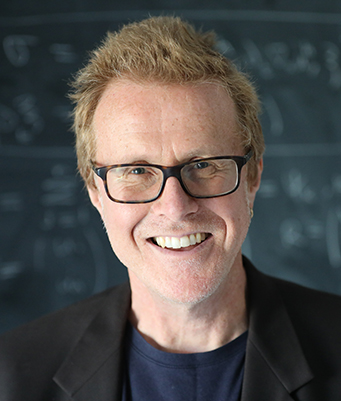
Andrew Stuart, Bren Professor of Computing and Mathematical Sciences, Caltech
Wednesday, March 29, 2023
4:30-5:30 PM
Davis Auditorium, CEPSR
Refreshments will be served in 200 Mudd from 3:45-4:15 PM
Title: The Legacy of Rudolph Kalman: Applications, Algorithms and Analysis
Abstract: In 1960 Rudolph Kalman published what is arguably the first paper to develop a systematic, principled approach to the use of data to improve the predictive capability of mathematical models. As our ability to gather data grows at an enormous rate, the importance of this work continues to grow too. The lecture will describe Kalman's paper and how it leads to other algorithms, including ensemble Kalman filtering. These methods have revolutionized applications such as navigation, weather prediction, oceanography, oil recovery and medical imaging; and they shows promise to impact other areas such as machine learning. Various applications will be highlighted in the talk.
Algorithms will be introduced, and interpreted, through a simple iterative optimization framework. Despite their widespread use in applications, ensemble Kalman methods have attracted limited analysis. The talk will conclude by explaining a framework for their analysis, based on mean-field interacting particle systems, and recent theoretical results stemming from this framework.
Biography: Andrew Stuart obtained his undergraduate degree in Mathematics, from Bristol University in 1983, his PhD from the Oxford University Computing Laboratory in 1987 and was then a postdoc at MIT in the period 1987-1989. Before joining Caltech he held permanent positions at Bath University (1989-1992), Stanford University (1992-1999) and Warwick University (1999--2016). His research interests focus on computational applied mathematics; and in particular challenges presented by the age of information, such as the integration of data with mathematical models and the mathematics of machine learning. He has been awarded the Leslie Fox Prize for Numerical Analysis in 1989, the IPST Monroe Martin Prize in 1995, the Whitehead Prize from the London Mathematical Society in 2000, and the James Wilkinson Prize in Numerical Analysis and Scientific Computing (1997), the Germund Dahlquist Prize (1997) and the J.D. Crawford Prize (2007), all from SIAM. He was elected an inaugural SIAM Fellow in 2009. He delivered invited lectures at the International Congress of Industrial and Applied Mathematics (ICIAM) in 2007 and 2023, at the European Congress of Mathematicians (ECM) in 2012 and at the International Congress of Mathematicians (ICM) in 2014. He was elected as a Fellow of The Royal Society in 2023.
2020-2022
No seminars were scheduled during this time
2019
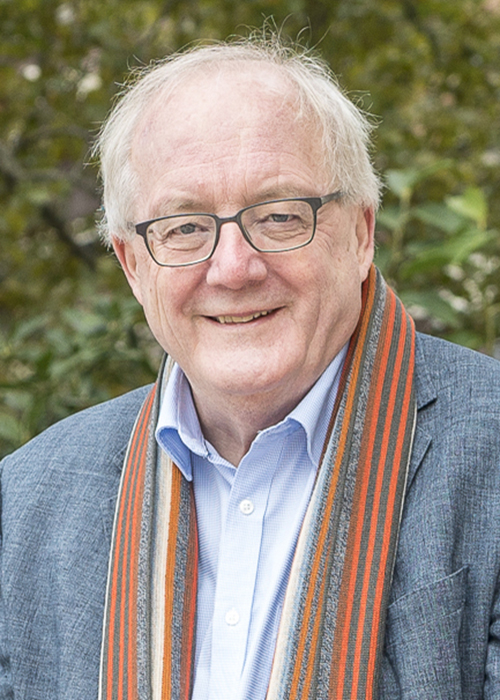 Simon Tavaré Director, Irving Institute for Cancer Dynamics, Departments of Statistics and Biological Sciences, Columbia University
Simon Tavaré Director, Irving Institute for Cancer Dynamics, Departments of Statistics and Biological Sciences, Columbia University
"Adventures in modeling cancer evolution"
Tuesday, April 23, 2019 1:00 PM: Refreshments in 200 Mudd, 1:30 PM: Lecture in 750 CEPSR
Abstract: Understanding the past and future evolution of tumors is a challenging experimental and mathematical problem. Cancer is described as a disease of the genome, so my focus will be on mutations in DNA and what they tell us about tumor evolution. I will focus on aspects of tumor heterogeneity, the DNA sequence variation observed between tumors and within them. I will outline some of the issues, illustrating the interplay between molecular data obtained from tumors and the statistical and stochastic modeling used for inference. I will conclude with a glimpse of where technology is taking us in this quest, and the sort of quantitative problems that are just around the corner.
Biography: Simon Tavaré obtained his PhD in Probability and Statistics in 1979 from the University of Sheffield, and began his research career in the USA. After an informal postdoc with Sam Karlin in Stanford, he held positions in Mathematics at the University of Utah, Statistics at Colorado State University, and Mathematics at the University of Southern California. He held the Kawamoto Chair in Biological Sciences at USC from 1998 to 2014. His research there included work in population genetics, computational statistics, bioinformatics, probabilistic combinatorics and inference for stochastic processes.
In 2003, Simon moved to the University of Cambridge, as Professor of Cancer Research in the Department of Oncology, a group leader in the Cambridge Research Institute from 2006, and a Professor in the Department of Applied Mathematics and Theoretical Physics. From February 2013 to January 2018 he was Director of the Cancer Research UK Cambridge Institute, which became a department of the University of Cambridge in January 2013. His group there focuses on statistical bioinformatics and computational biology, particularly evolutionary approaches to understanding cancer biology. In 2009 Simon was elected a Fellow of the Academy of Medical Sciences (FMedSci), in 2011 a Fellow of the Royal Society (FRS) and in 2015 a member of EMBO. He gave the American Mathematical Society’s Einstein Lecture in 2015, and was one of the invited speakers at ICIAM2015 in Beijing. He was President of the London Mathematical Society from 2015 to 2017, and was elected a Fellow of the American Mathematical Society in 2018.
In 2018, Simon moved to Columbia, where he is Herbert and Florence Irving Professor of Cancer Research in the Departments of Statistics and Biological Sciences, and Director of the new Irving Institute for Cancer Dynamics. He was elected as a foreign associate of the US National Academy of Sciences in 2018.
_______________________________
 Weinan E, Princeton University
Weinan E, Princeton University
"The Mathematical Theory of Neural Network-based Machine Learning"
Wednesday, April 3, 2019
4:00 PM: Refreshments in 200 Mudd, 4:45 PM: Lecture in Davis Auditorium, CEPSR
Abstract: The task of supervised learning is to approximate a function using a given set of data. In low dimensions, its mathematical theory has been established in classical numerical analysis and approximation theory in which the function spaces of interest (the Sobolev or Besov spaces), the order of the error and the convergence rate of the gradient-based algorithms are all well-understood. Direct extension of such a theory to high dimensions leads to estimates that suffer from the curse of dimensionality as well as degeneracy in the over-parametrized regime. In this talk, we attempt to put forward a unified mathematical framework for analyzing neural network-based machine learning in high dimension (and the over-parametrized regime). We illustrate this framework using kernel methods, shallow network models and deep network models. For each of these methods, we identify the right function spaces (for which the optimal complexity estimates and direct and inverse approximation theorems hold), prove optimal a priori generalization error estimates and study the behavior of gradient decent dynamics. The talk is based mostly on joint work with Chao Ma, Lei Wu as well as Qingcan Wang.
Biography: Weinan E received his PhD from UCLA in 1989. After being a visiting member at the Courant Institute of NYU and the Institute for Advanced Study at Princeton, he joined the faculty at NYU in 1994. He is now a professor of mathematics at Princeton University, a position he has held since 1999. Weinan E’s work centers around multi-scale modeling and machine learning. Most recently he has been working on integrating machine learning and physical modeling to solve problems in traditional areas of science and engineering, such as molecular dynamics, PDEs, control theory, etc. Weinan E is the recipient of the SIAM R. E. Kleinman Prize, von Karman Prize, Peter Henrici Prize (to be awarded at ICIAM 2019), and the ICIAM Collatz Prize. He is a member of the Chinese Academy of Sciences, a fellow of the American Mathematical Society, a SIAM fellow and a fellow of the Institute of Physics.
This event is cosponsored by the Center for Foundations of Data Science and the TRIPODs Institute of Columbia University.
2018
 Bjorn Engquist University of Texas at Austin
Bjorn Engquist University of Texas at Austin
"Computational multiscale modeling"
March 22, 2018
2:45 PM: Seminar in 545 Mudd, 4:00 PM: Refreshments in 200 Mudd
In multiscale processes different phenomena interact on different scales in time and space. Computer simulations of such processes are challenging since the smallest scales should be accurately represented over domains that cover the largest scales. This results in a very large number of unknowns and prohibitingly long computing times. We will briefly discuss analytical techniques and then focus on numerical multiscale methods, which have been developed to overcome this difficulty, in particular, the Heterogeneous Multiscale Method (HMM). It is a computational framework focusing on the larger scales that only uses fine scale simulations locally. We will illustrate these technologies by applications to continuum and atomistic mechanics. The mathematical background from homogenization, averaging and information theory will be described. We will also see how parallel in time algorithms can be used for handling multiscale dynamical systems. The, so-called, parareal method can overcome the natural obstacle of causality for parallelization.
Biography: Bjorn Engquist received his PhD in numerical analysis from Uppsala University in1975. He has been professor of mathematics at UCLA, and the Michael Henry Stater University Professor of Mathematics and Applied and Computational Mathematics at Princeton University. He was director of the Research Institute for Industrial Applications of Scientific Computing and of the Centre for Parallel Computers at the Royal Institute of Technology, Stockholm. At Princeton University, he was director of the Program in Applied and Computational Mathematics and the Princeton Institute for Computational Science. Engquist is a member of the American Academy of Arts and Sciences, the Royal Swedish Academy of Sciences, the Royal Swedish Academy of Engineering Sciences, and the Norwegian Academy of Science and Letters. He was a Guggenheim Fellow, received the first Society for Industrial and Applied Mathematics Prize in Scientific Computing, the Henrici Prize, the Birkhoff Prize in Applied Mathematics, and the ICIAM Pioneer Prize. Engquist came to The University of Texas at Austin in 2004, where he holds the Computational and Applied Mathematics Chair I, and is director of the ICES Center for Numerical Analysis. Engquist’s research focuses on development and analysis of numerical methods for differential equations. His earlier work includes the development of absorbing boundary conditions, homogenization theory and nonlinear high-resolution schemes for fluid dynamics. He is presently working on computational multi-scale methods and fast algorithms for wave propagation with applications in seismology.
2017
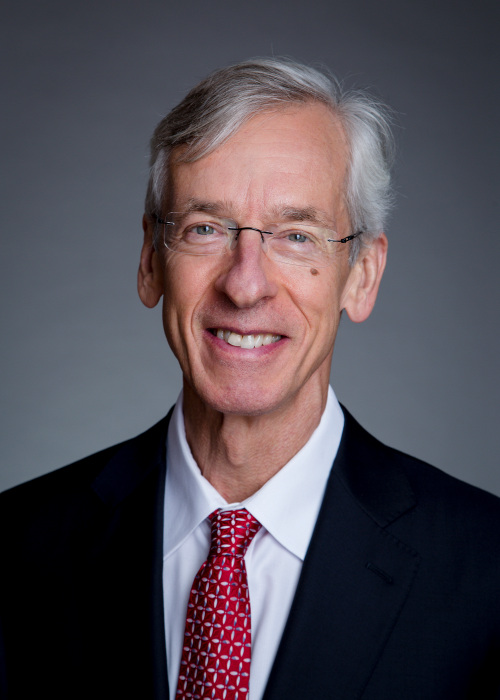 Russel Caflisch, Director, Courant Institute of Mathematical Sciences, NYU
Russel Caflisch, Director, Courant Institute of Mathematical Sciences, NYU
"Signal Fragmentation for Low Frequency Radio Transmission”
November 15, 2017
2:45 PM: Seminar in 750 CEPSR (Shapiro Center) 4:00 PM: Refreshments in 200 Mudd
Signal fragmentation is a method for transmitting a low frequency signal over a collection of small antennas through a modal expansion (similar to one level of a wavelet expansion), in which the mode has compact support in time. We analyze the spectral leakage and optimality of signal fragmentation. For a special choice of mode, the spectral leakage can be eliminated for sinusoidal signals and minimized for bandlimited or AM signals. We derive the optimal mode for either support size or for energy efficiency.
Biography: Russel Caflisch is director of the Courant Institute of Mathematical Sciences and Professor in the Mathematics Department at NYU. He has also held faculty positions at Stanford and UCLA, where he was director of the Institute for Pure and Applied Mathematics (IPAM). He is a fellow of the Society for Industrial and Applied Mathematics, the American Mathematical Society, and the American Academy of the Arts and Sciences. His research is on a wide range of topics in applied math, including PDEs, fluid dynamics, plasma physics, materials science, Monte Carlo methods, and computational finance.
2016
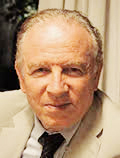 Eitan Tadmor, Distinguished University Professor, University of Maryland & Director of the University Center for Scientific Computation and Mathematical Modeling (CSCAMM)
Eitan Tadmor, Distinguished University Professor, University of Maryland & Director of the University Center for Scientific Computation and Mathematical Modeling (CSCAMM)
"Collective Dynamics: Consensus, the Emergence of Leaders and Social Hydrodynamics"
Thursday, March 31, 2016
3:30 - 4:30 p.m. Davis Auditorium, CEPSR (Shapiro Center)
Nature and human society offer many examples of self-organized behavior: ants form colonies, birds flock together, mobile networks coordinate their rendezvous, and human opinions evolve into parties. These are simple examples for collective dynamics, in which local interactions tend to self-organize into large scale clusters of colonies, flocks, parties, etc. We discuss the dynamics of such systems, driven by "social engagement" of agents with their neighbors. We will focus on two natural questions which arise in this context. First, what is the large time behavior of such systems? The underlying issue is how different rules of engagement influence the formation of large scale patterns such as clusters, and in particular, the emergence of "consensus". We propose an alternative paradigm based on the tendency of agents "to move ahead" which leads to the emergence of trails and leaders. Second, what is the group behavior of systems which involve a large number of agents? Here one is interested in the qualitative behavior of the group rather than tracing the dynamics of each of its agents. Agent-based models lend themselves to kinetic and hydrodynamics descriptions. It is known that smooth solutions of "social hydrodynamics", if they exist, must flock. But alignment-based models reflect the competition on resources, and left unchecked, may lead to finite-time singularities. We discuss the global regularity of such solutions for sub-critical initial configurations.
Biography: Eitan Tadmor is a Distinguished University Professor at the University of Maryland (UMd), College Park and the Director of the university Center for Scientific Computation and Mathematical Modeling (CSCAMM). He received his PhD in Mathematics from Tel Aviv University in 1979, and he began his scientific career as a Bateman Research Instructor in CalTech, 1980-1982. He held professorship positions at Tel-Aviv University, 1983-1998, where he chaired the Department of Applied Mathematics from 1991-1993, and at UCLA, 1995-2004, where he was the founding co-director of the NSF Institute for Pure and Applied Mathematics (IPAM) from 1999-2001. Since 2002, he has served on the faculty of the Department of Mathematics and the Institute for Physical Sciences and Technology at UMd, where he was recently awarded as the PI of the NSF Research network KI-Net. Tadmor held visiting positions in the universities of Michigan, Paris VI, Brown and at the Courant Institute. He serves on the editorial boards of more than a dozen leading international journals and has given numerous invited lectures, including plenary addresses in the international conferences on hyperbolic problems in 1990 and 1998 and an invited lecture in the 2002 International Congress of Mathematicians. In 2015 Tadmor was awarded the SIAM-ETH Peter Henrici prize for " original, broad, and fundamental contributions to the applied and numerical analysis". Tadmor is an AMS Fellow who was listed on the ISI most cited researchers in mathematics. He published more than one hundred and fifty research papers, mostly in Numerical Analysis and Applied Partial Differential Equations. _______________________________
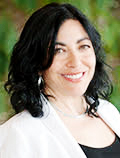 Joint Colloquium with Columbia Data Science Institute
Joint Colloquium with Columbia Data Science Institute
"Once Upon a Graph: How to Get from Now to Then in Massive Networks"
Wednesday, April 20, 2016
5:00 - 6:00 p.m. Davis Auditorium, CEPSR (Shapiro Center)
Biography: Jennifer Tour Chayes is Distinguished Scientist and Managing Director of Microsoft Research New England in Cambridge, MA, which she co-founded in 2008, and Microsoft Research NYC, which she co-founded in 2012. Chayes was Research Area Manager for Mathematics, Theoretical Computer Science and Cryptography at Microsoft Research Redmond until 2008. Chayes joined Microsoft Research in 1997, when she co-founded the Theory Group. Her research areas include phase transitions in discrete mathematics and computer science, structural and dynamical properties of self-engineered networks, and algorithmic game theory. She is the co-author of about 125 scientific papers and the co-inventor of about 30 patents. Chayes has many ties to the academic community. She was for many years Professor of Mathematics at UCLA. She serves on numerous institute boards, advisory committees and editorial boards, including the Turing Award Selection Committee of the Association for Computing Machinery, the Board of Trustees of the Mathematical Sciences Research Institute and the Institute for Computational and Experimental Research in Mathematics, the Advisory Boards of the Center for Discrete Mathematics and Computer Science, the Howard Hughes Medical Institute Janelia Farm Research Campus, and Women Entrepreneurs in Science and Technology. Chayes is a past Chair of the Mathematics Section of the American Association for the Advancement of Science, and a past Vice-President of the American Mathematical Society. Chayes received her BA in biology and physics at Wesleyan University, where she graduated first in her class, and her PhD in mathematical physics at Princeton. She did her postdoctoral work in the mathematics and physics departments at Harvard and Cornell. She is the recipient of a National Science Foundation Postdoctoral Fellowship, a Sloan Fellowship, and the UCLA Distinguished Teaching Award. Chayes has recently been the recipient of many leadership awards including the Leadership Award of Women Entrepreneurs in Science and Technology, the Leading Women Award of the Girl Scouts of Eastern Massachusetts, the Women to Watch Award of the Boston Business Journal, and the Women of Leadership Vision Award of the Anita Borg Institute. She has twice been a member of the Institute for Advanced Study in Princeton. Chayes is a Fellow of the American Association for the Advancement of Science, the Fields Institute, the Association for Computing Machinery, the American Mathematical Society, a National Associate of the National Academies, and an Elected Member of the American Academy of Arts and Sciences. Chayes is well known for her work on phase transitions, in particular for laying the foundation for the study of phase transitions in problems in discrete mathematics and theoretical computer science; this study is now giving rise to some of the fastest known algorithms for fundamental problems in combinatorial optimization. She is also one of the world’s experts in the modeling and analysis of random, dynamically growing graphs, which are used to model the Internet, the World Wide Web and a host of other technological and social networks. Among Chayes’ contributions to Microsoft technologies are the development of methods to analyze the structure and behavior of various networks, the design of auction algorithms, and the design and analysis of various business models for the online world.
2015
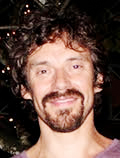 Eric Vanden-Eijnden , Courant Institute, NYU
Eric Vanden-Eijnden , Courant Institute, NYU
"Modeling Reactive Events in Complex Systems"
Thursday, November 12, 2015
4:00-5:00 PM 750 CEPSR, Costa Engineering
Reactive events such as conformation change of macromolecules, chemical reactions in solution, nucleation events during phase transitions, thermally induced magnetization reversal in micromagnets, etc. pose challenges both for computations and modeling. At the simplest level, these events can be characterized as the hopping over a free energy barrier associated with the motion of the system along some reaction coordinate. Indeed, this is the picture underlying classical tools such as transition state theory or Kramers reaction rate theory, and it has been successful to explain reactive events in a wide variety of context. However, this picture presupposes that we know or can guess beforehand what the reaction coordinate of the event is. In many systems of interest - protein folding, enzyme kinetics, protein-protein interactions, etc. - making such educated guesses is hard if not impossible. The question then arises whether we can develop a more general framework to describe reactive events, elucidate their pathway and mechanism, and give a precise meaning to a concept such as the reaction coordinate. In this talk I will discuss such a framework, termed transition path theory (TPT), and indicate how it can be used to develop efficient algorithms to accelerate the calculations and analysis of reactive events. I will also illustrate these concepts on several examples, including the reorganization of Lennard- Jones clusters and the folding of the pinWW domain protein.
Biography: Eric Vanden-Eijnden is a professor of mathematics at the Courant Institute of Mathematical Sciences, New York University. Vanden-Eijnden earned his doctorate in 1997 from the Université libre de Bruxelles under the supervision of Radu Bălescu. In 2009, he was awarded the Germund Dahlquist Prize of the Society for Industrial and Applied Mathematics “for his work in developing mathematical tools and numerical methods for the analysis of dynamical systems that are both stochastic and multiscale”, and in 2011 he won SIAM’s J.D. Crawford Prize for outstanding research in nonlinear science. Vanden-Eijnden’s work focuses mainly on the theoretical and computational aspects of Non-Equilibrium Statistical Mechanics and Applied Probability, with applications to biomolecular systems, chemical and biological networks, materials science, atmosphere- ocean science, and fluids dynamics. He has introduced Transition Path Theory (TPT), a general framework to analyze metastability in complex systems. He has developed numerical techniques such as the string methods or temperature-accelerated molecular dynamics to accelerate molecular dynamics simulations. He has also contributed to the development and analysis of multiscale numerical methods for systems whose dynamics span a wide range of spatio-temporal scales.
_______________________________
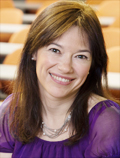 Maria Chudnovsky , Professor of Industrial Engineering and Operations Research and Professor of Mathematics, Columbia University
Maria Chudnovsky , Professor of Industrial Engineering and Operations Research and Professor of Mathematics, Columbia University
Wednesday, February 25, 2015
5:00 PM 750 CEPSR, Costa Engineering
A graph is a mathematical construct that represents information about connections between pairs of objects. As a result, graphs are widely used as a modeling tool in engineering, social sciences, and other fields. About 10 years ago one of the central open problems in graph theory at the time, the Strong Perfect Graph Conjecture, was solved. The proof used structural graph theory methods, and spanned 155 journal pages. The speaker was part of the team of authors of this mathematical beast. In this talk we will explain the problem, describe some of the ideas of the proof (that has since been shortened somewhat), and discuss related problems that have been a subject of more recent research..
Biography: Maria Chudnovsky received her BA and MSc form the Technion, and a PhD from Princeton University in 2003. Her research interests are in graph theory and combinatorics. She is an editorial board member of the Journal of Graph Theory, SIAM Journal on Discrete Mathematics, and Discrete Mathematics. Dr. Chudnovsky was a part of a team of four researchers that proved the strong perfect graph theorem, a 40-year-old conjecture that had been a well-known open problem in both graph theory and combinatorial optimization. For this work, she was awarded the Ostrowski foundation research stipend in 2003, and the prestigious Fulkerson prize in 2009. She was also named one of the "brilliant ten" young scientists by the Popular Science magazine. In 2012, Dr. Chudnovsky received the MacArthur Foundation Fellowship, a five-year $500,000 "genius" grant to individuals who show exceptional creativity in their work and the prospect for still more in the future. In 2014, she was an invited speaker at the International Congress of Mathematicians.
_______________________________
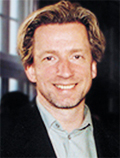 Peter Schroeder, Professor of Computer Science and Applied and Computational Mathematics, California Institute of Technology
Peter Schroeder, Professor of Computer Science and Applied and Computational Mathematics, California Institute of Technology
"Discrete Differential Geometry—From Geometry to Computation"
January 29, 2015
5:00 PM 750 CEPSR, Costa Engineering
Many of the mathematical descriptions of the world around us are expressed in the language of differential geometry. Physics, in a sense, is geometry and our computations should reflect this. But do they? Traditionally numerical analysis has focused on recovering relationships between measurable variables in the infinitesimal limit, i.e., when using ever finer discretizations of some smooth problem statement. Instead I advocate that essential structure of the underlying equations should be captured even at finite resolution. I will illustrate my arguments with examples from recent research. 1) What is the smoothest direction field on a curved surface? (Can’t comb a sphere without a cow lick someplace...) 2) Current flowing through a wire causes a magnetic field; given only the field, can you find the wire(s)? These two examples use the same machinery albeit in different dimensions (surfaces and volumes respectively). You’ll learn about line bundles, connections, curvature, and ground states of Schrödinger operators. Come to the talk to find out what these terms mean and how they all connect! Joint work with Felix Knöppel, Keenan Crane, Steffen Weißmann, and Ulrich Pinkall
Biography: Peter Schröder is professor of computing and mathematical sciences at Caltech where he has been a member of the faculty for the past 19 years. His research area is computer graphics and more specifically efficient numerical methods for Digital Geometry Processing, a research area he helped co-found. This work has been honored with the ACM SIGGRAPH Computer Graphics Achievement award as well as other recognitions among them a Packard Fellowship, the Humboldt Prize, and a Hans Fischer Senior Fellowship. His current work centers on Discrete Differential Geometry, which aims to develop discrete theories and algorithms which parallel the smooth setup of classical Differential Geometry.
2014
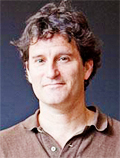 Michael Brenner , Glover Professor of Applied Mathematics and Applied Physics, Harvard University
Michael Brenner , Glover Professor of Applied Mathematics and Applied Physics, Harvard University
November 5, 2014, 3:30-4:00 PM, Davis Auditorium, CEPSR
Evolution by natural selection has resulted in a remarkable diversity of organism morphologies. But is it possible for developmental processes to create “any possible shape?” Or are there intrinsic constraints? I will discuss our recent exploration into the shapes of bird beaks. Initially, inspired by the discovery of genes controlling the shapes of beaks of Darwin’s finches, we showed that the morphological diversity in the beaks of Darwin’s Finches is quantitatively accounted for by the mathematical group of affine transformations. We have extended this to show that the space of shapes of bird beaks is not large, and that a large phylogeny (including finches, cardinals, sparrows, etc.) are accurately spanned by only three independent parameters -- the shapes of these bird beaks are all pieces of conic sections. After summarizing the evidence for these conclusions, I will delve into our efforts to create mathematical models that connect these patterns to the developmental mechanism leading to a beak. It turns out that there are simple (but precise) constraints on any mathematical model that leads to the observed phenomenology, leading to explicit predictions for the time dynamics of beak development in song birds. Experiments testing these predictions for the development of zebra finch beaks will be presented.
Biography: Michael Brenner is the Glover Professor of Applied Mathematics and Applied Physics at the Harvard University School of Engineering and Applied Science. He received his PhD in Physics at the University of Chicago under the direction of Leo Kadanoff. Brenner’s research uses mathematics to examine a wide variety of problems in science and engineering, ranging from understanding the shapes of whale flippers, bird beaks and fungal spores, to answering ordinary questions about daily life, such as why a droplet of fluid splashes when it collides with a solid surface. Brenner is a Fellow of the American Academy of Arts and Sciences.
_______________________________
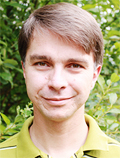 Stanislav Smirnov Professor of Mathematics, University of Geneva
Stanislav Smirnov Professor of Mathematics, University of Geneva
"The Ising Model of a Ferromagnet from 1920 to the Present Day"
October 23, 2014, 3:30 p.m. Davis Auditorium, CEPSR (Shapiro Center)
The Ising model is an archetypical model of the order-disorder phase transition: though simple to formulate, it exhibits a complex behavior, much like the real-world phenomena in solid-state physics, ferromagnetism, chemistry, biology, computer science. In 1920 the physicist Wilhelm Lenz proposed to model ferromagnetic materials by a lattice of plus-minus spins with interacting neighbors. His student Ernst Ising solved the model in dimension one four years later. The one-dimensional behavior turned out to be trivial, with no phase transition when the interaction strength changes, and for a decade people searched for other possible models. However, a ferromagnetic phase transition was established by Rudolf Peierls in higher dimensions, and in 1944 Lars Onsager famously calculated the free energy for the Ising model in two dimensions. Since then the Ising model became widely studied, as it exhibits complicated phase transition behavior, yet allows a very detailed analysis in dimension two. We will give a historical introduction to the model, and then describe some recent results.
Biography: Stanislav Smirnov is a professor at the University of Geneva, Switzerland, and holds a part-time position at the St. Petersburg State University. He received his PhD in 1996 at the California Institute of Technology under the direction of Nikolai Makarov, and worked at Yale and KTH Stockholm before moving to Geneva in 2003. Smirnov’s research interests include analysis, dynamical systems, probability and mathematical physics. In 2010 he was awarded the Fields Medal for his work on conformal invariance of the percolation and Ising models at criticality.
_______________________________
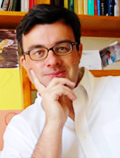 Emmanuel Candes, Barnum-Simons Chair in Mathematics and Statistics, Stanford University
Emmanuel Candes, Barnum-Simons Chair in Mathematics and Statistics, Stanford University
"Modern Optimization Meets Physics: Recent Progress on Phase Retrieval"
October 9, 2014, 5:30 p.m. Davis Auditorium, CEPSR (Shapiro Center)
Emmanuel Candès is the Barnum-Simons Chair in Mathematics and Statistics and a Professor of Electrical Engineering (by courtesy) at Stanford University. He received his PhD in statistics from Stanford in 1998. His research interests include computational harmonic analysis, statistics, information theory, signal processing and mathematical optimization. He has received several awards including the Alan T. Waterman Award from NSF, which is the highest honor bestowed by the National Science Foundation, and which recognizes the achievements of early-career scientists. He has given over 60 plenary lectures at major international conferences. He was elected to the National Academy of Sciences and to the American Academy of Arts and Sciences in 2014.
Biography: In many imaging problems such as X-ray crystallography, detectors can only record the intensity or magnitude of a diffracted wave as opposed to measuring its phase. Phase retrieval concerns the recovery of an image from such phaseless information. This problem is of great importance because it arises in many applications ranging from astronomical imaging to speech analysis. This talk discusses novel acquisition strategies and novel convex and non-convex algorithms which are provably exact allowing perfect phase recovery from a minimal number of noiseless intensity- only measurements. More importantly, we also demonstrate that our noiseaware algorithms are stable in the sense that the reconstruction degrades gracefully as the signal-to-noise ratio decreases. This may be of special contemporary interest because phase retrieval is at the center of spectacular current research efforts collectively known under the name of coherent diffraction imaging aimed, among other things, at determining the 3D structure of large protein complexes.
_______________________________
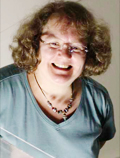 Andrea Bertozzi , Professor of Mathematics, Betsy Wood Knapp Chair for Innovation and Creativity, and Director of Applied Mathematics University of California Los Angeles
Andrea Bertozzi , Professor of Mathematics, Betsy Wood Knapp Chair for Innovation and Creativity, and Director of Applied Mathematics University of California Los Angeles
September 23, 2014, 5:00 PM 750 CEPSR, Costa Engineering
There is an extensive applied mathematics literature developed for problems in the biological and physical sciences. Our understanding of social science problems from a mathematical standpoint is less developed, but also presents some very interesting problems, especially for young researchers. This lecture uses crime as a case study for using applied mathematical techniques in a social science application and covers a variety of mathematical methods that are applicable to such problems. We will review recent work on agent based models, methods in linear and nonlinear partial differential equations, variational methods for inverse problems and statistical point process models. From an application standpoint we will look at problems in residential burglaries and gang crimes. Examples will consider both "bottom up'' and "top down'' approaches to understanding the mathematics of crime, and how the two approaches could converge to a unifying theory.
Biography: Andrea Bertozzi is an applied mathematician whose work has impacted many fields: the theory and applications of nonlinear partial differential equations, fluid dynamics, geometric methods for image processing, crime modeling and analysis, and swarming/cooperative dynamics. Among her many honors are: SIAM's Kovalevsky Prize (2009), election to the American Academy of Arts and Sciences (2010), and Fellow of both Society of Industrial and Applied Mathematics and the American Mathematical Society (2010). Prof. Bertozzi currently serves as Chair of the Science Board of the NSF Institute for Computational and Experimental Research in Mathematics at Brown University and serves on the Science Board of the Mathematical Sciences Research Institute at Berkeley.
_______________________________
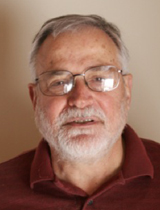 George C. Papanicolaou, Robert Grimmett Professor of Mathematics, Stanford University
George C. Papanicolaou, Robert Grimmett Professor of Mathematics, Stanford University
"Correlation Based Imaging and Geophysical Applications"
April 11, 2014, 12:00 – 1:00 p.m., 903 School of Social Work (1255 Amsterdam, corner of Amsterdam and 121st Street)
In the emerging interdisciplinary science of imaging, in all its forms, sensor imaging in complex media has a special place. This is because of the mathematical challenges it poses as well as because of the many applications that depend on its success, from high-resolution medical imaging to seismic imaging, satellite imaging, etc. I will give a brief overview of the mathematical issues that come up and then introduce correlation based, or interferometric methods that are well suited to deal with complex media. I will give examples from seismic imaging where correlation based methods have had a huge impact recently.
Biography: George Papanicolaou has had major impact across many fields and in the overall direction of modern Applied Mathematics. The overarching theme of his work is the mathematical and computational study of multi-scale phenomena. His work spans direct and inverse problems in, for example, electromagnetic wave propagation (linear and nonlinear), sound waves in the in the Earth's ocean and lithosphere, diffusion in porous media. His very recent work has focused on imaging and communication systems, including time-reversal arrays. Papanicolaou is a Member of the US National Academy of Sciences, a Fellow of the American Academy of Arts and Sciences, a SIAM Fellow and a Fellow of the American Mathematical Society. Papanicolaou has given a Plenary Lecture at the International Congress of Mathematicians (ICM-2003) and the Josiah Willam Gibbs Lecture of the AMS. He was awarded the SIAM von Neumann Prize (2006). The degree of Doctor Honoris Causa of the University of Paris VII was conferred on Papanicolaou in 2011.
_______________________________
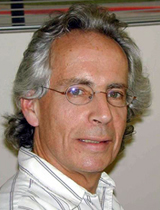 Stanley Osher, Professor of Mathematics & Director of Applied Mathematics, University of California, Los Angeles
Stanley Osher, Professor of Mathematics & Director of Applied Mathematics, University of California, Los Angeles
"What Sparsity and L1 Optimization Can Do for YOU"
March 25, 2014, 4:30 – 5:30 p.m., Davis Auditorium, CEPSR
Sparsity and compressive sensing have had a tremendous impact in science, technology, medicine, imaging, machine learning and now, in solving multiscale problems in applied partial differential equations, developing sparse bases for Elliptic eigenspaces and connections with viscosity solutions to Hamilton-Jacobi equations. L1 and related optimization solvers are a key tool in this area. The special nature of this functional allows for very fast solvers: L1 actually forgives and forgets errors in Bregman iterative methods. I will describe simple, fast algorithms and new applications ranging from sparse dynamics for PDE, new regularization paths for logistic regression and support vector machine to optimal data collection and hyperspectral image processing.
Biography: Stanley Osher is an American mathematician, known for his many contributions in shock capturing, level-set methods, and PDE-based methods in computer vision and image processing. He is a professor at the University of California, Los Angeles (UCLA), Director of Special Projects in the Institute for Pure and Applied Mathematics (IPAM) and member of the California NanoSystems Institute (CNSI) at UCLA.
_______________________________
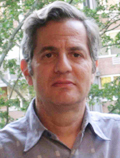 Robert V. Kohn , Professor of Mathematics, Courant Institute, New York University
Robert V. Kohn , Professor of Mathematics, Courant Institute, New York University
"A Variational Perspective on Wrinkling Patterns in Thin Elastic Sheets"
February 20, 2014, Lecture: 4:30 – 5:30 p.m., Davis Auditorium, CEPSR (Shapiro Center)
Thin sheets exhibit a daunting array of patterns. A key difficulty in their analysis is that while we have many examples, we have no classification of the possible "patterns." I have explored an alternative viewpoint in a series of recent projects with Jacob Bedrossian, Peter Bella, Jeremy Brandman, and Hoai-Minh Nguyen. Our goal is to identify the *scaling law* of the minimum elastic energy (with respect to the sheet thickness, and in some cases with respect to other small parameters). Success entails proving upper bounds and lower bounds that scale the same way. The upper bounds are usually easier, since nature gives us a hint. The lower bounds are more subtle, since they must be ansatz-independent. In many cases, the arguments used to prove the lower bounds help explain "why" we see particular patterns. My talk will give an overview of this activity, and details of some examples.
Biography: Robert V. Kohn has made major contributions to the theory and application of Partial Differential Equations. His work has had impact in fields ranging from Material Science (cloaking, coarsening, and wrinkling phenomena) to Fluid Dynamics. Professor Kohn, a Fellow of SIAM and the AMS, was awarded (jointly with L. Caffarelli and L. Nirenberg) the 2014 L.P. Steele Prize of the American Mathematical Society for seminal contributions to the study of the Navier Stokes equations of fluid dynamics.
